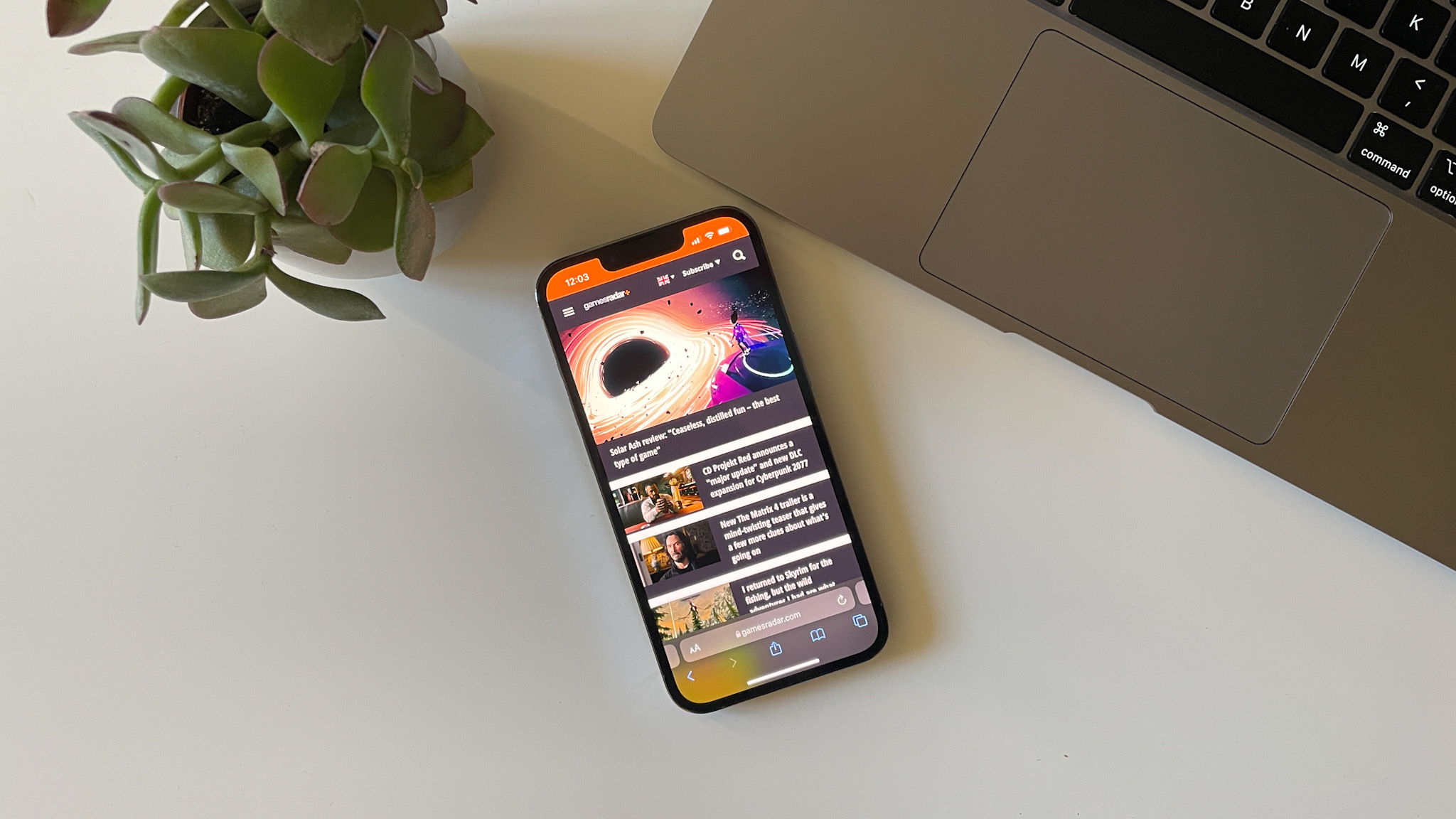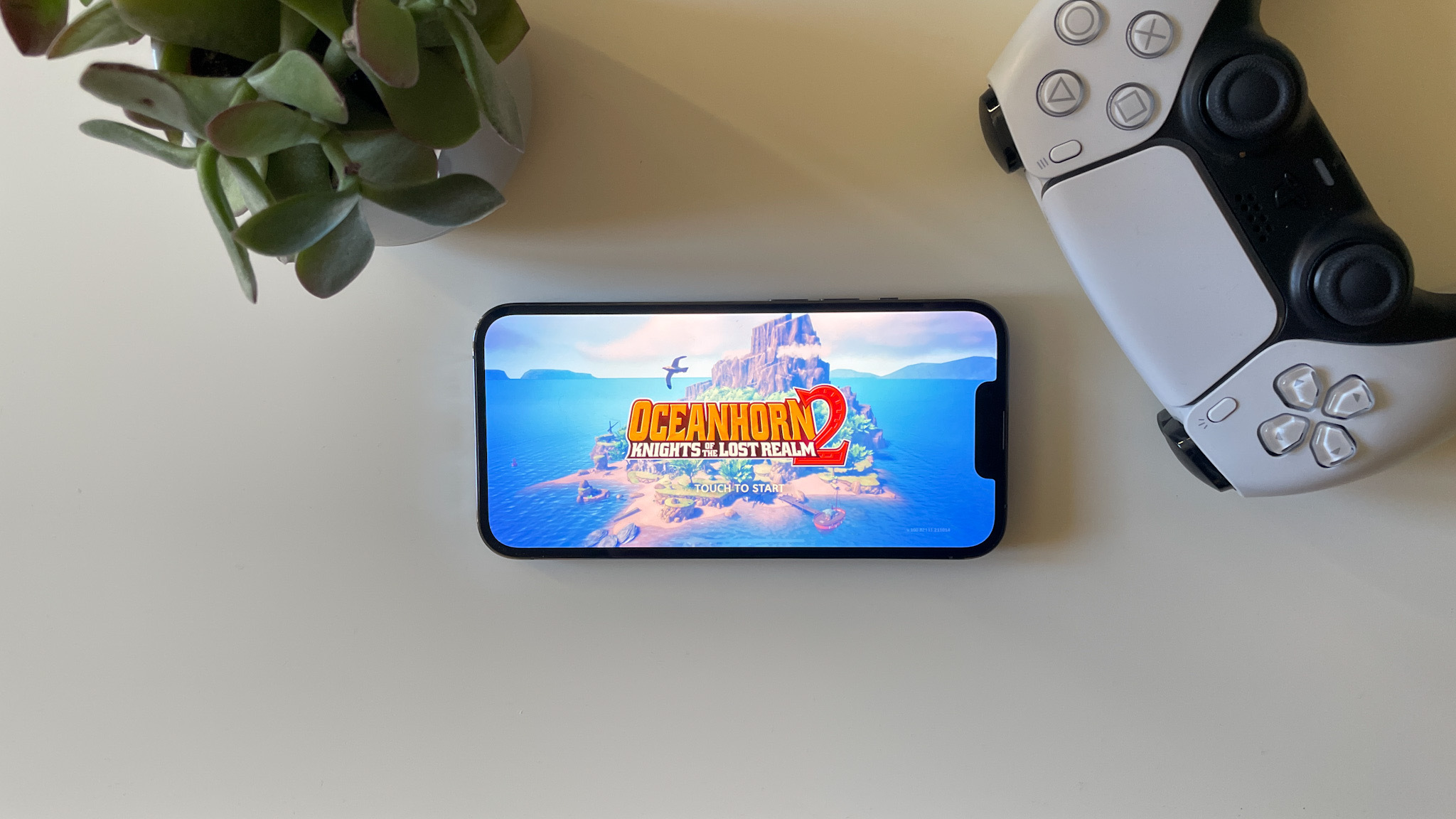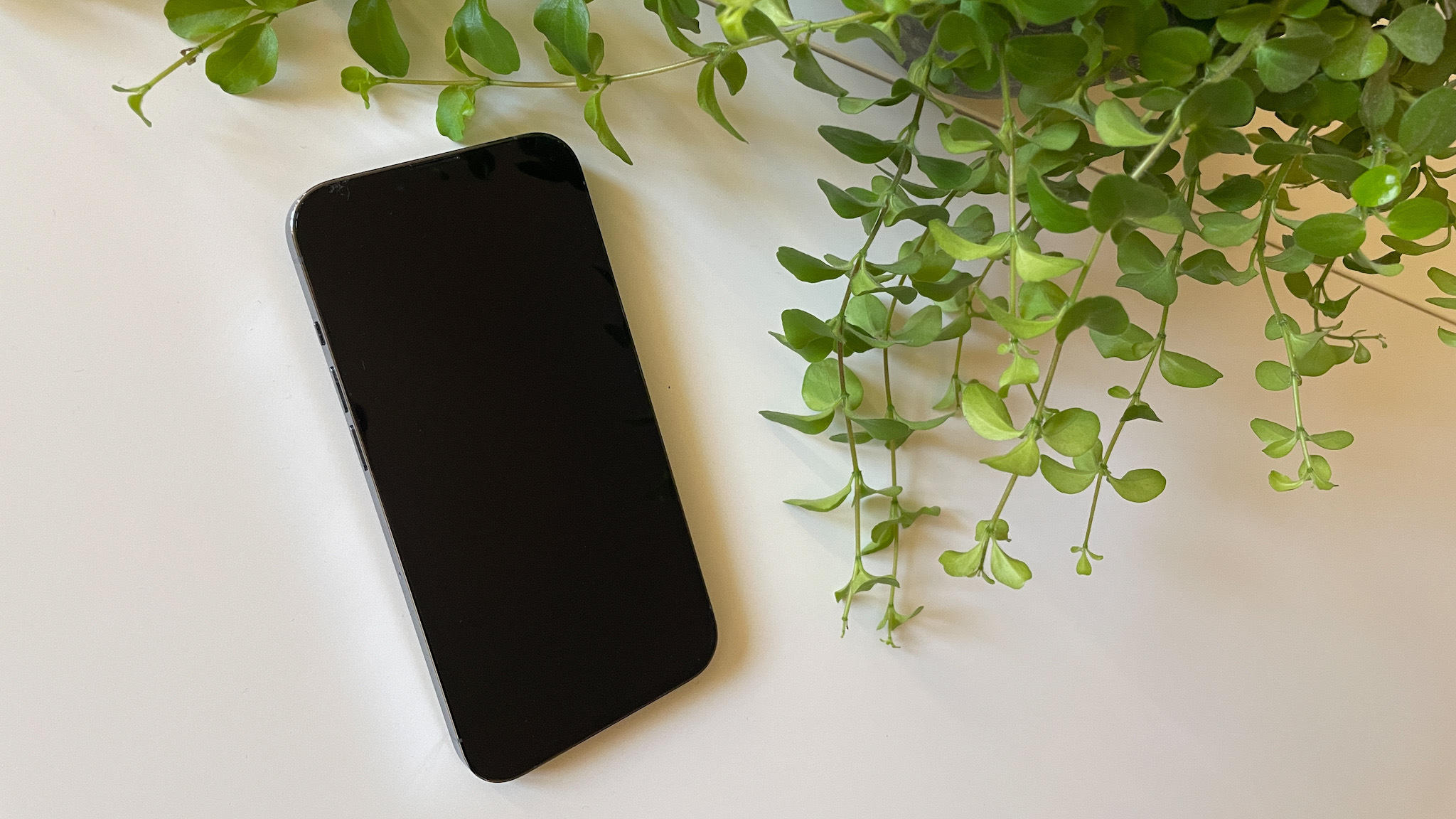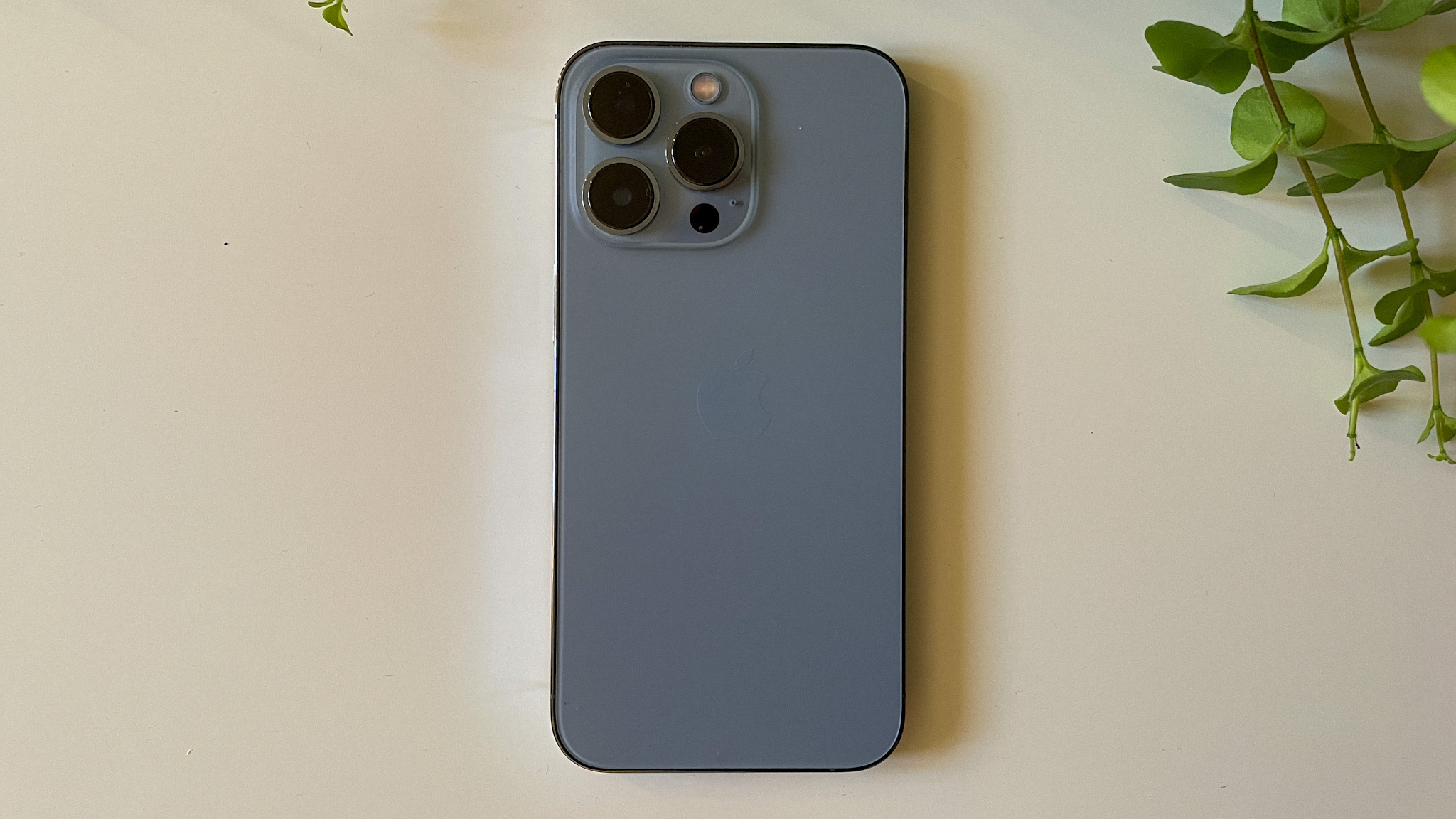GamesRadar+ Verdict
The iPhone 13 Pro brings Apple into the modern age of gaming phones, finally equipping the iPhone with a 120Hz variable refresh rate and powering it all with extra GPU heft. This is a phone designed more for the power user, but will still offer everyday social media scrollers that premium experience they're looking for.
Pros
- +
Powerful new processor
- +
Gorgeous screen when on full 120Hz pelt
- +
Excellent battery life...
Cons
- -
... for now
- -
Cinematic mode feels unnecessary
Why you can trust GamesRadar+
iPhone releases have become a little tiresome these days - the last two releases felt like Apple bringing iterative improvements to market with a confetti canon. The iPhone 13 Pro, however, bucks this trend.
While we were all waiting for a small upgrade after the challenges tech companies have been facing over the last two years, Apple has surprised everyone with a new device that actually feels fresh. Screen, battery, and camera upgrades are all immediately noticeable and actually enhance the iPhone experience (without having to be pointed out while you justify your purchase to your friends).
On the outside, the iPhone 13 Pro looks much the same as the previous release, with a return to the iPhone 5-style flat edges. However, under the hood there's some serious power to behold. A 120Hz refresh rate display, boosted processor, and enhanced battery all mark Apple finally taking note of the gaming potential of its smartphones, so we spent some time with the latest model to find out how Apple stacks up against some of the best gaming phones on the market.
iPhone 13 Pro display
Apple fans have been demanding a higher refresh rate display for some time, and with the iPhone 13 Pro, Apple has finally delivered. The new release carries a 120Hz Super Retina XDR OLED panel with ProMotion (variable refresh rate to you and me). Meanwhile, the screen still measures 6.1-inches across, and offers a 2532x1170 resolution.
It's the refresh rate that has us singing from the rooftops, though. In practice, it makes scrolling between app pages smooth and speedy straight from the off and it's easier than ever to scan an article in Safari thanks to reduced text blur. Essentially, that enhanced refresh rate follows your movements across the screen with much higher precision and animations feel far snappier.
Of course, that would all be for nothing if it wasn't for the new Super Retina XDR display technology. Comparing it to my iPhone 12, the difference between the contrast, brightness, and vividness of even just the app tray is immediately noticeable. It was difficult to switch between devices - the previously eye-watering 12 felt too washed out in comparison.

It's easy to say everything looks better, however - this is Apple latest iPhone, it should be the best it's ever released. That said, this is the first display where it feels like everything is coming together as it should. The LTPO OLED screen was borrowed from previous models, but still offers a wide dynamic range. It's also particularly bright - a feature that plays particularly nicely with the variable refresh rate which ensures you're not burning your battery. Add all of that to a 120Hz snap when you need it most and everything from catching up on emails to streaming 4K content and playing Apple Arcade's most visually demanding titles felt far more luxurious.
A brand new camera feature set
Of course, one of the biggest upgrades in the iPhone 13 Pro is that camera system. Cinematic mode dominated Apple's marketing for the new device, and for good reason: it's incredibly impressive. There's just one downside - I don't see myself ever actually using it.
The ability to shift focus between subjects automatically is a nice feature, and - thanks largely to marketing - was the first thing I tried out. The results are impressive in good lighting, with AI automatically pulling focus as faces entered the frame and the ability to alter this effect after filming was particularly mind-blowing for a smartphone. I did notice some considerable slowing in low lighting, where the iPhone 13 Pro was able to recognize a face pretty quickly, but struggled to focus with the same speed, often blurring the scene for a little too long before snapping into place.
The only problem is, I'm not really sure who cinematic mode is for. Casual everyday use wouldn't require these shooting features and professional content creators will be investing in considerably more sophisticated equipment. There is a middle ground here, but the masses certainly won't find one of the iPhone 13 Pro's biggest features too useful.

Where consumers will see a boost, though, is in photographs. This is where the iPhone 13 Pro really proves itself for the Insta-minded among us. Whether you're a photography pro or just snapping your first pictures out of the box, the improvements in clarity and balance are easily spotted.
In well-lit environments, my photos were a little crisper with a better color balance than the iPhone 12. Colors popped ever so slightly brighter and with a greater contrast between them. However, the real benefits are found in low light situations.
Night mode shooting never felt like it really caught up to Samsung on previous iPhones, but that might have changed with this release. We now have a larger sensor with a f/1.5 aperture on the wide-angle lens. That leaves plenty more room for light to flood in, giving the phone more information to work with in darker conditions.
Previous iterations may have done a good job of lighting up your scene, but often, they also introduced additional noise and didn't manage the color balance too well, leaving a gray-ish haze in its wake. The iPhone 13 Pro, however, produces clear, bright shots with plenty of finer details included.
There's also the new Macro mode, which allows you to get even closer to your subject. The ultra-wide lens will kick into gear once you're within about 15cm away, and I did notice a slight kick to the picture when this happens. It means your framing shifts slightly, which was frustrating during use, especially when focus starts shifting between different parts of your subject.

I found the focus of the Macro setting to be a little finicky. Even when I had started my photography session with a particular part of a subject in proper focus, the jump to the ultra-wide lens often placed the focus slightly further away.
Gaming on the iPhone 13 Pro
The iPhone 13 Pro feels like the first real step Apple is taking in the direction of gaming phones. Obviously that 120Hz refresh rate had to be in place before the iPhone could be considered for its handling of the latest games, but now that we have that smooth screen, Apple Arcade is set to spring to life.
At the moment there's only a few select titles that can take full advantage of that higher refresh rate. It's a niggling annoyance that will be ironed out as more developers get comfortable, but Genshin Impact, Phoenix 2, Pascal's Wager, and Doom are currently the only titles taking advantage of the speedy screen.

That said, the additional GPU housed inside the processor is certainly pulling its weight. While likely largely dedicated to keeping that variable refresh rate running smoothly, onscreen movement is still incredibly crisp and all response times are fast as well. That's perfect for twitch reflex titles, but the fidelity on offer here was really put to the test on larger Apple Arcade games.
Oceanhorn 2 on the iPhone 13 Pro comes as a revelation, with incredible colors and responsive motion throughout even more action-packed sequences, with multiple moving parts on screen. Even heavier titles like Call of Duty Mobile and The Pathless were equally impressive, and rarely caused the phone to heat up even when going full pelt.
The iPhone 13 Pro also comes with a new 1TB option, perfect for housing your full Apple Arcade backlog and keeping all your current titles at your fingertips, though it's worth noting that I struggled to even fill the 512GB model with the current selection.
Battery life
One of the biggest factors keeping the iPhone away from the gaming space before the 13 Pro was battery life. The new A15 Bionic and variable refresh rate work together to keep your juice topped up, and I never ran into any issues during particularly long play sessions.
In everyday use, the iPhone 13 Pro battery behaves exactly how you would expect a brand new model to. With standard use (social media checks, a few YouTube videos, half a dozen Google searches, location services on, and 5G) I managed to regularly squeeze two days out of this battery, though time will tell how long that performance holds up.
Overall - should you buy the iPhone 13 Pro?

As with all iPhone upgrades, the iPhone 13 Pro is an iteration on the bedrock of previous versions. You're obviously not getting a brand new experience here, but the fine tuning under the hood, extra display features, and new camera options certainly work hard to make this feel like a bigger upgrade than most. If you're coming from an iPhone 12 Pro, you'll likely only be making this jump if you're looking for the best screen to fit your games onto, or you'd like to tinker with some of the new photo modes. Meanwhile, everyday users should be comfortable holding onto their handset until the 13 Pro drops its price.
However, those moving on up from an iPhone 11 Pro, or a base iPhone 12, will certainly feel the power jump under their fingertips here. If you're in a position to upgrade, and you value the feel and responsiveness of your screen and spend a significant amount of time gaming, the latest release may well be worth a look.

Managing Editor of Hardware at GamesRadar+, I originally landed in hardware at our sister site TechRadar before moving over to GamesRadar. In between, I've written for Tom’s Guide, Wireframe, The Indie Game Website and That Video Game Blog, covering everything from the PS5 launch to the Apple Pencil. Now, i'm focused on Nintendo Switch, gaming laptops (and the keyboards, headsets and mice that come with them), PS5, and trying to find the perfect projector.



